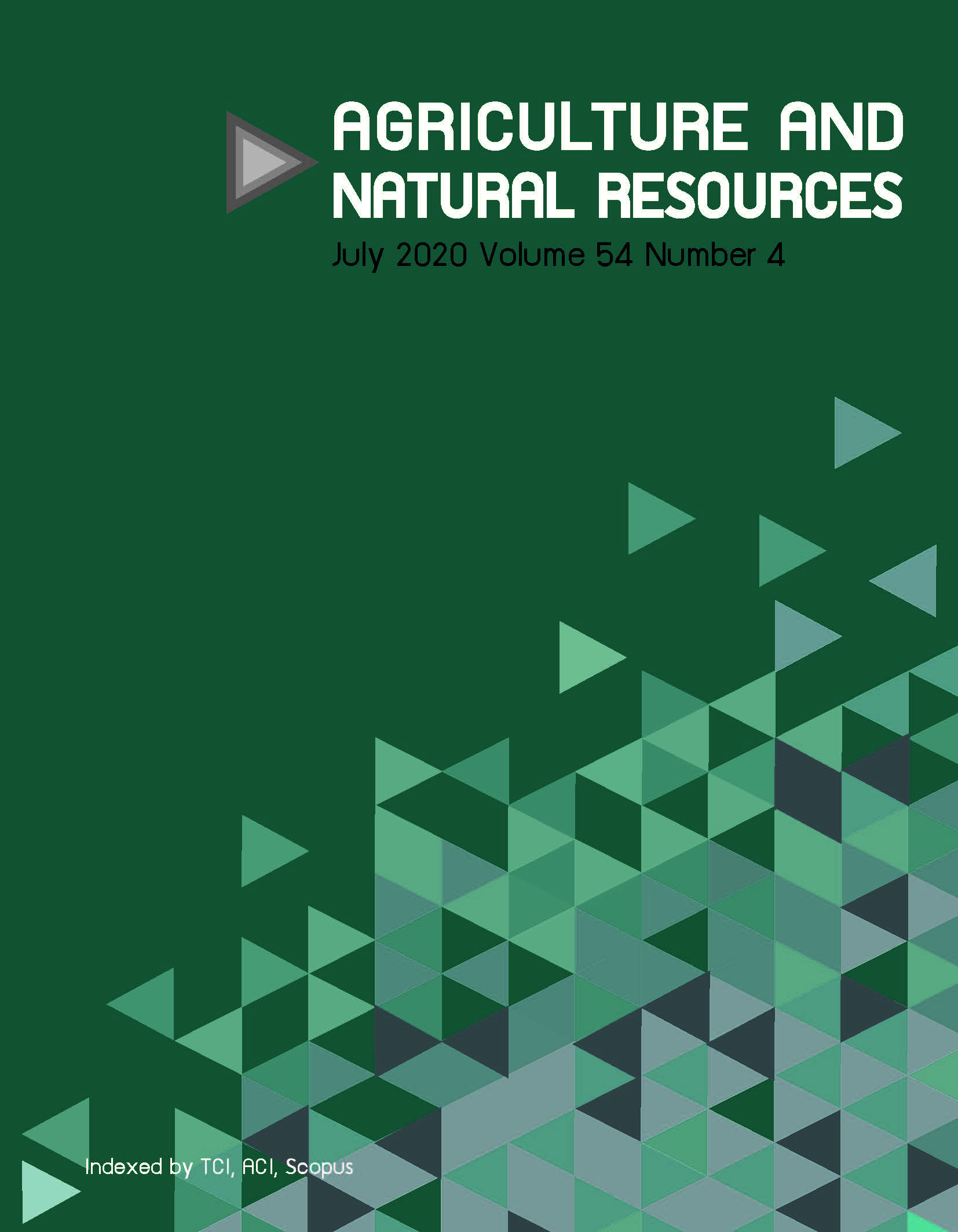Reproductive organ development of tropical seagrass, Enhalus acoroides
Keywords:
Anatomy, Development, Morphology, Seagrass flower, The Andaman SeaAbstract
The reproductive organ development and anatomical structures of Enhalus acoroides using samples collected from Haad Chao Mai National Park on the Andaman Sea, southern Thailand, were examined. Details were investigated of the different developmental stages of four different reproductive organs: male inflorescence and female inflorescence with a solitary flower, fruit and seed. A newly reported observation was that the similarity in size and shape between male and female papillae facilitated the hydrophobic pollination process. The papillae of the male floret and female flower were newly reported. The mean values (Mean ± SD) of the papillae of male florets were 31.5 ± 3.1 μm long and 25.0 ± 3.6 μm wide and those of female flowers were 31.0 ± 2.9 μm long and 26.5 ± 1.9 μm wide. The development of fibers around the female peduncle was newly reported. After the seed attached to the sediment, the epidermal cells at the base of hypocotyl modified to various long filaments in order to act like root hairs within 7 d. The results indicated that the characteristics of reproductive organs of E. acoroides are linked to the reproductive biology, which substantially improves understanding of the biological adaptation for promoting sexual reproduction of this seagrass.
Downloads
Published
How to Cite
Issue
Section
License

This work is licensed under a Creative Commons Attribution-NonCommercial-NoDerivatives 4.0 International License.
online 2452-316X print 2468-1458/Copyright © 2022. This is an open access article under the CC BY-NC-ND license (http://creativecommons.org/licenses/by-nc-nd/4.0/),
production and hosting by Kasetsart University of Research and Development Institute on behalf of Kasetsart University.







